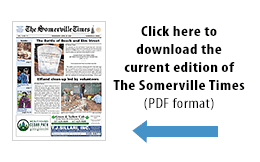By Joseph A. Curtatone
 (The opinions and views expressed in the commentaries of The Somerville News belong solely to the authors of those commentaries and do not reflect the views or opinions of The Somerville News, its staff or publishers.)
(The opinions and views expressed in the commentaries of The Somerville News belong solely to the authors of those commentaries and do not reflect the views or opinions of The Somerville News, its staff or publishers.)
In every city, residents request city services and information through multiple channels, both formal and informal. Here in Somerville, people communicate directly with city government through their aldermen, through 311, through public hearings, through regular meetings of our boards and commissions, through neighborhood office hours scheduled by our mayor and aldermen, via our website and in many other ways.
There’s nothing wrong with having lots of different channels: residents should be able to interact with local government in the ways and at the times that are most comfortable for them. But the focus has usually been on one issue at a time: a particular regulation, a particular program, a particular development proposal or community concern. It can be difficult for city officials to engage residents in a more general discussion.
When we established the SomerStat program back in 2004, we created a new method to measure government performance and efficiency, and we began to develop a new statistical portrait of where and how city programs and services are used across the city. Within City Hall, SomerStat has become a powerful tool to set and measure performance standards within our annual budget process, and to help me and the Board of Aldermen determine spending priorities.
But as useful as it is for city officials, one of the most exciting things about the SomerStat performance management system is that its data can be broken down to the community level to provide each of our residential and business districts with a portrait of city services and spending priorities that is specific to individual neighborhoods.
When that detailed portrait is combined with a discussion of all sorts of community issues, from public safety to economic development to quality of life – SomerStat’s trove of localized data provides an ideal basis for an ongoing dialogue about local government between city officials and the residents they serve.
That is why the City of Somerville created the ResiStat program. A partnership between the Mayor’s Office and the Board of Aldermen, ResiStat is a regular series of meetings that allow residents to get feedback, see data and share updates on resident requests and city projects. In addition to serving as forums for resident input and comment, ResiStat meetings are helping our SomerStat staff to develop, and ultimately publish, a strategic plan for each neighborhood and subpopulation.
Not all ResiStat meetings are neighborhood-based: two of our ResiStat groups focus on the special interests and concerns of younger residents (Young Somerville) and on parents with minor children (Somerville Parents). We also created ResiStat meetings in Spanish, Portuguese and Haitian Creole for our three largest non-English speaking populations.
All meetings follow a similar format. The evening begins with an update on the issue areas and concerns raised at the previous meeting, which is followed by a presentation of data (DPW calls, public safety stats, traffic and parking reports, etc.) specific to that neighborhood or group. The third agenda item is usually a policy presentation and discussion (on such topics as parks and recreation planning or local development projects), often led by a guest specialist from city or state government. The meeting concludes with a discussion of new topics and with requests to city officials for information or action plans.
It’s a deceptively simple but extremely useful way to bring the big picture of local government to the neighborhood and group level – and to empower residents to become involved in the larger policy issues faced by the city as a whole.
Some of the outcomes of the ResiStat process are local and immediate. For example, when Winter Hill residents expressed concern about crime in a particular area, the follow-up was a directed police patrol. Some results affect the entire city, as in the case of the concerns expressed by multiple groups about street and sidewalk repair issues. As the new fiscal year approaches, ResiStat input now helps me identify and sort resurfacing projects I might not have known about otherwise.
One of the most positive results has been that neighborhoods feel that city government is more accountable, since a regular meeting requires that city staff update residents on progress made in addressing the problems and concerns raised in prior meetings. Another result – less easy to measure but still important – is the way in which residents have gained a better understanding of how the city works. By providing a forum in which residents can ask questions directly to city staff, residents start to understand how decisions are made, and their experiences of government start to feel less isolated or random.
ResiStat remains a work in progress, but it has made a promising start. It’s a great way to introduce new people and initiatives. (Chief Anthony Holloway has attended every meeting since he took command of the Somerville Police in January.) But because it has been funded in part by a grant from the Boston Municipal Research Bureau, the future of ResiStat will be one of the funding issues addressed in the upcoming FY2009 budget process.
Do we really need ResiStat? Whatever the decision, the debate over that policy question and many others will for the first time be enriched by the systematic input of empowered citizens in every neighborhood across Somerville. And that’s pretty exciting.
(A complete list of ResiStat groups, meeting times and locations may be found on the city’s website, www.somervillema.gov, or by calling 311.)















Reader Comments